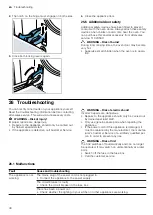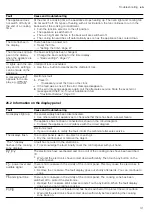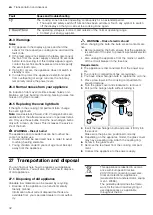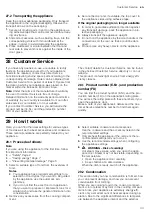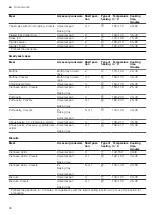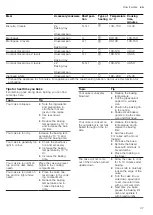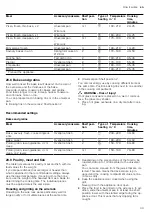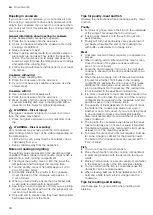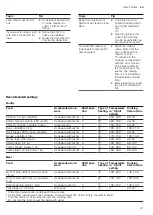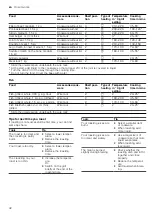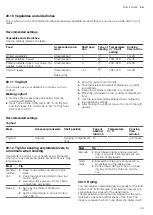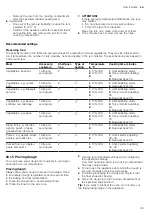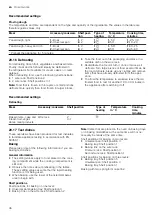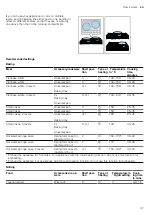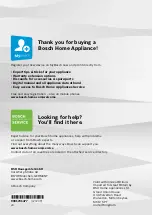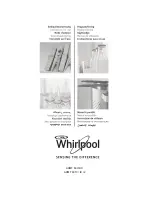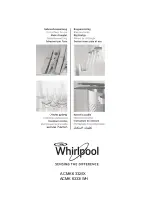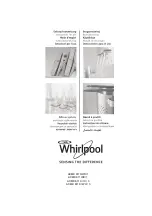
en
How it works
44
be preserved. The thinner you cut the slices, the
quicker the drying process will be and the more flavour
the dried food will retain. Settings ranges are specified
for this reason.
Preparation for drying
1.
Only use unblemished, fresh fruit, vegetables and
herbs and wash them thoroughly. Line the wire rack
with greaseproof paper or parchment paper. Drain
the excess water from the fruit and then dry it.
2.
If required, cut the fruit into thin pieces or slices of
equal size. Place unpeeled fruit onto the dish with
the sliced surfaces facing upwards.
Ensure that neither fruit nor mushrooms overlap on
the wire rack.
3.
Grate vegetables and then blanch them. Drain the
excess water from the blanched vegetables and
spread them evenly on the wire rack.
4.
Dry herbs on the stem. Spread the herbs out evenly
and slightly heaped on the wire rack.
5.
Turn very juicy fruit and vegetables several times.
After drying, remove the dried fruit and vegetables
from the paper immediately.
Recommended settings
Drying
The table contains settings for drying various foodstuffs. If you want to dry food that is not listed in the table, you
should use similar foodstuffs in the table as a reference.
Note:
Use the following shelf positions for drying:
¡
1 wire rack: Shelf position 3
¡
2 wire racks: Shelf positions 3 + 1
Meal
Accessory/cookware
Shelf position
Type of
heating
Temperat-
ure in °C
Cooking
time,
minutes
Pome fruit, e.g. apple rings, 3 mm
thick, 200 g per wire rack
Wire rack
3
3+1
80
4–8 hours
Root vegetables, e.g. carrots,
grated, blanched
Wire rack
3
3+1
80
4–7 hours
Mushrooms, sliced
Wire rack
3
3+1
80
5–8 hours
Herbs, stalks removed
Wire rack
3
3+1
60
2-5 hours
29.14 Preserving food
You can preserve fruit and vegetables by heating them
and sealing them in air-tight jars.
¡
Only use heat-resistant, clean, undamaged pre-
serving jars, rubber seals and clips.
¡
Only use fruit and vegetables which are in perfect
condition.
¡
Only use jars that are the same size and contain the
same food.
WARNING ‒ Risk of injury!
If the preserving process is not carried out correctly,
the preserving jars may crack.
▶
Make sure that you use the specified setting values.
▶
Use clean and undamaged preserving jars.
▶
Place no more than six ½ litre or 1 litre jars of food
in the oven at a time. Do not use jars that are larger
than this.
Preparing fruit or vegetables for preserving
1.
Thoroughly wash the fruit and vegetables.
2.
Prepare the fruit and vegetables, e.g. peel, remove
pips/stone and chop.
3.
Fill the glass up to approx. 2 cm below the mouth.
4.
Fill the jars with hot liquid.
For one-litre jars, approx. 400 ml of liquid is neces-
sary.
For fruit: Skimmed sugar solution
– Approx. 250 g sugar for sweet fruit
– Approx. 500 g sugar for sour fruit
For vegetables:
– Boiled water
5.
Wipe the rims of the jars. They must be clean.
6.
Place a damp rubber seal and a lid on each jar.
7.
Seal the jars with the clips.
Preserving fruit or vegetables
1.
Slide the universal pan into the cooking compart-
ment at shelf position 2.
2.
Once they have been prepared, place the jars into
the universal pan in such a way that they do not
touch one another.
3.
Pour 500 ml hot water (approx. 80 °C) into the uni-
versal pan.
4.
Use the recommended setting values when config-
uring the appliance settings.
a
After approx. 40 to 50 minutes, small bubbles begin
to form at short intervals. The jar contents "bubble".
5.
Fruit
‒
Once all of the jars are bubbling, switch off the
appliance.

